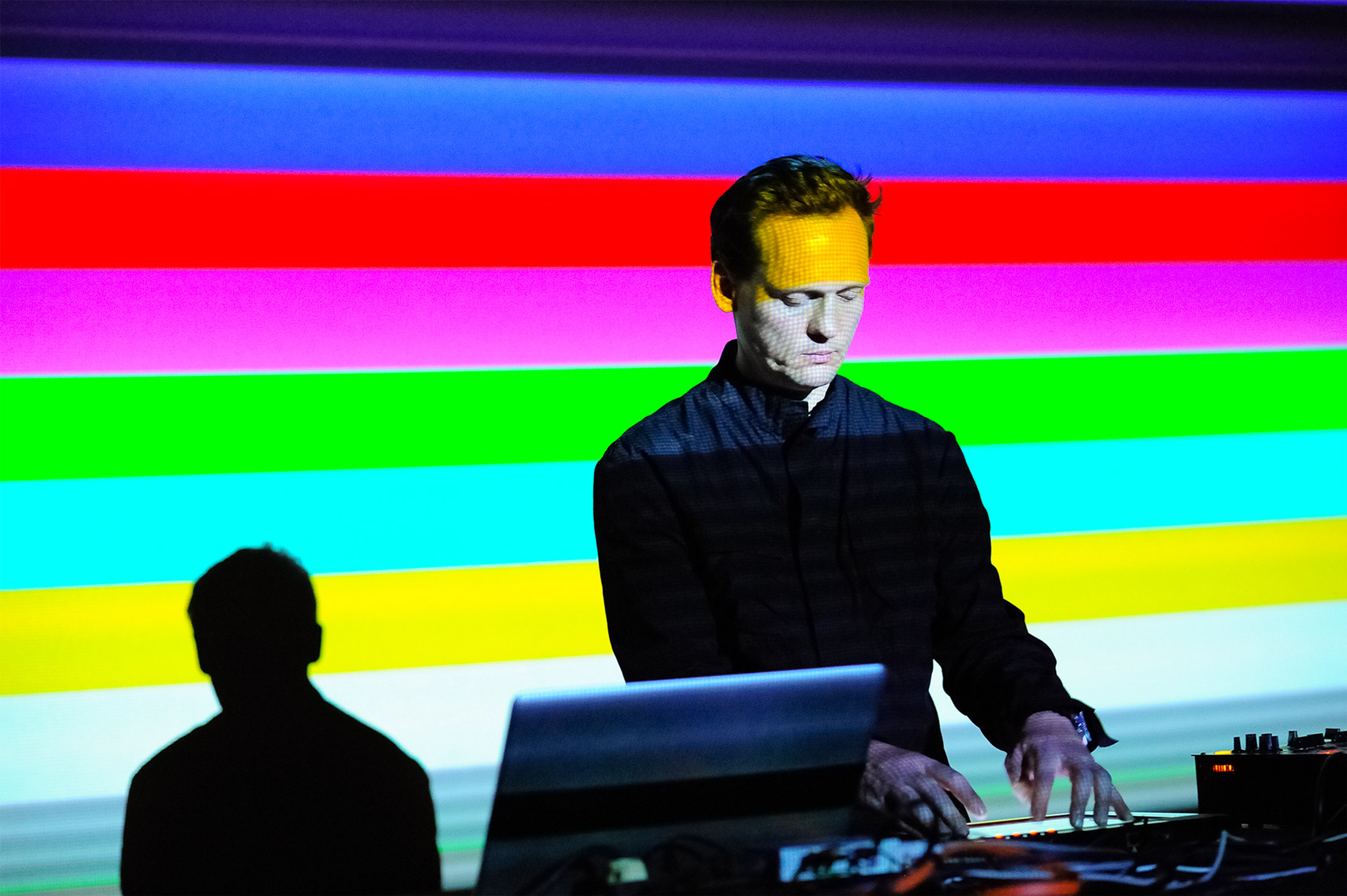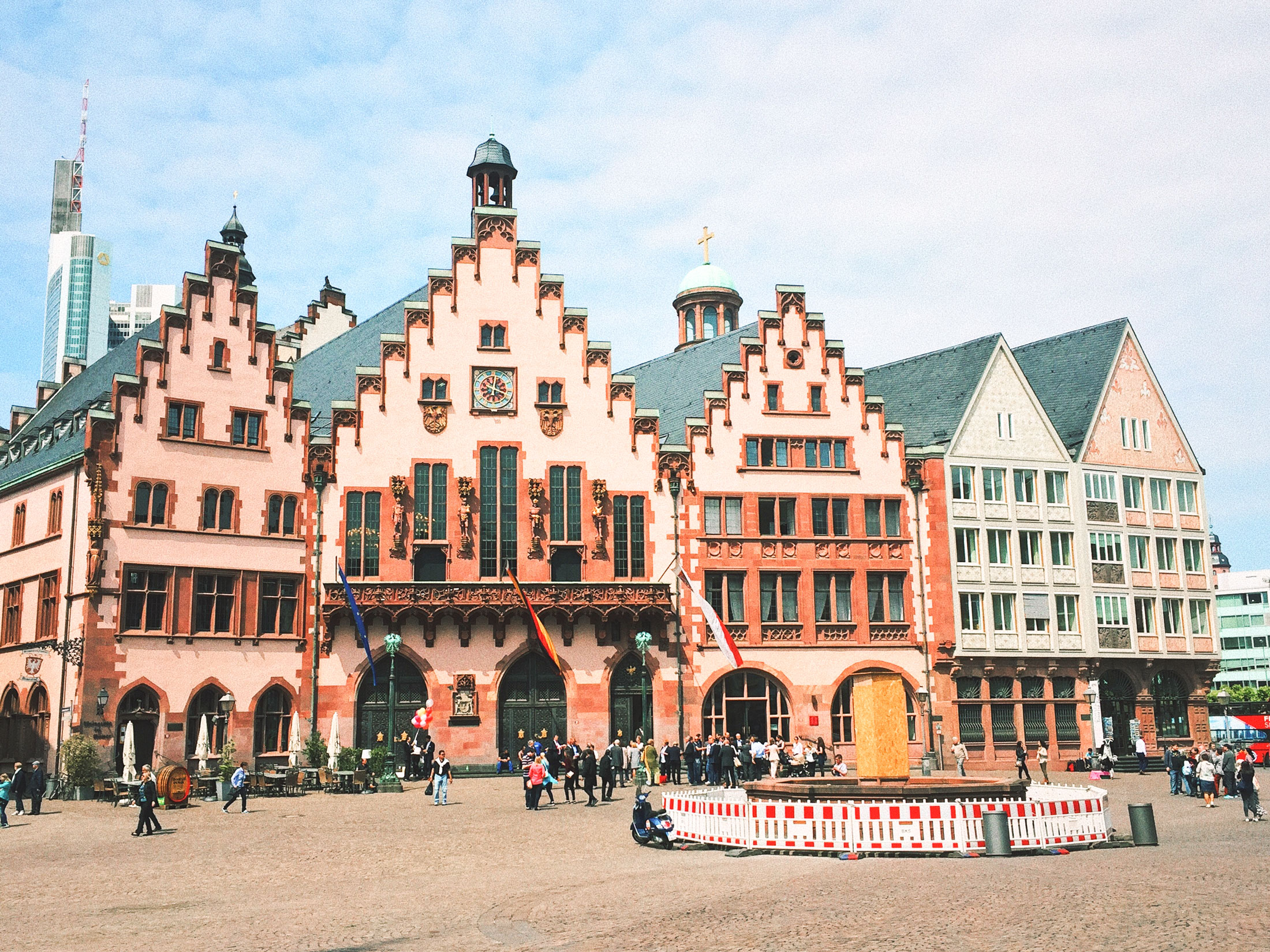8 January 2024
What happened to authentic 2000-era microhouse?
By Thomas (2000 Underground Music)
The title of this article, reuses the title of the documentary What Happened To Tech House? made by Resident Advisor, in 2021.
What Happened To Tech House?
The term microhouse is usually credited to the music journalist Philip Sherburne, from his writing in the magazine The Wire in 2001 (Sherburne, 2001).
Microhouse is basically lighter, more detailed, more intricate and more delicate, than typically harder-hitting or more prominent house or techno. Micro means extremely small, and macro means larger.
David McNamee writing in the The Long + Short magazine (McNamee, 2017) says:
‘But equally, microhouse works as contemplative head music. It can be used in the same way as ambient, for relaxation or mood-enhancing purposes. Perhaps going against conventional aural logic, I find the way it is crammed with musical information, to be soothing’.
Yes for me, it is really an amazing genre of exploring abstraction and compositions, that is endlessly fascinating, sort of like abstract art. I love to hear different musicians takes on microhouse, everyone has their own personalities and approaches.
Related and connected musical areas and genres are:
- Clicks & cuts.
- Deep minimal.
- Experimental.
- Glitch.
- Minimal.
- Minimal house.
- Minimal techno.
- Soundscapes.
Microhouse seemed to 1st appear, and echoed in the glitch album by German musician Oval in 1993 (Last.fm, 2024). The 1st microhouse track to gain mainstream popularity, by a non-glitch musician, was Isolée’s 1999 record Beau Mot Plage. However, microhouse did not gain popularity, until the early 2000s. It was helped, spread, supported, published and manufactured by record labels like: Fabric, Force Inc. Music Works, Kompakt, Mille Plateaux, Perlon, Spectral Sound, and Telegraph.
Wohnton by Oval. Ata Tak, Germany 1993
Beau Mot Plage by Isolée. Classic, United Kingdom 2000
Fabric
Force Inc. Music Works
Kompakt
Mille Plateaux
Perlon
Spectral Sound
Telegraph
This microhouse music being made in the 2000-era, was undeniably cutting edge, hyper-modern, contemporary, and way ahead of its time! All of it still sounds amazing today, what 20 years later… testament to what was going then and the high standard. The question should be asked: what happened after say 2006, in terms of microhouse quality, interest, engagement and advancement, what was the progression and advancement of it, from say 2000–2024? (not that anything has to be done, or is mandatory, of course…).
I would say microhouse was most active around 1999–2004. Then by around 2006, the 2000-era microhouse wave, faded out and there was much less of it about… When the Force Inc. Music Works empire distribution service (EFA Medien GmbH/EFA) collapsed in 2004, it seemed to have a devastating impact, and we sadly lost many strains of underground electronic music because of it, and what a shame that was… I really do feel, although cannot be totally sure, that this event (the collapse of the Force Inc. Music Works empire), had a disastrous impact on the greatness that was going on then, and did no favours for the genres or musicians going on then. It really could be as simple as that, when a large record label stops operating, it creates a huge loss, and often things do not recover or return to where it was.
Strains, types and sub-genres of microhouse
- Glitchy microhouse.
- Dance microhouse.
- Experimental microhouse.
Good 2000-era microhouse releases to listen to and find out about
Major microhouse singles and EPs from the 2000-era
- 2.1 by Akufen. Trapez, Germany 2001. https://www.discogs.com/release/8376-Akufen-Psychometry-Vol-2,
- Ana by Vita (Mikael Stavöstrand). Force Inc. Music Works, Germany 2001. https://www.discogs.com/master/93688-Vita-Ena.
- Bad Sneakers by Warmdesk. A Touch Of Class, Germany 2003. https://www.discogs.com/release/206484-Warmdesk-Pistachio-EP.
- Circa 1666 by Snd. Mille Plateaux, Germany 2001. https://www.discogs.com/release/42507-Various-Clicks__Cuts.
- Clairvoyance by Neina. Mille Plateaux, Germany 2000. https://www.discogs.com/release/42507-Various-Clicks__Cuts.
- Eko by Johan Skugge. Mitek, Sweden 2003. https://www.discogs.com/master/784293-Johan-Skugge-Quarters-EP.
- Grown by Donato Dozzy & Brando Lupi. Orange Groove, Germany 2004. https://www.discogs.com/release/315536-Donato-Dozzy-Brando-Lupi-Metal-Slave.
- Material Problem by Kit Clayton. Cytrax, United States 2000. https://www.discogs.com/release/33942-Kit-Clayton-Materialproblem, https://www.juno.co.uk/products/kit-clayton-retrospective-vinyl/874451-01/.
- Ment by Gramm. Source Records, Germany 1999. https://www.discogs.com/master/81422-Gramm-Personal_Rock.
- Normal People by Junkie Sartre. Raum…musik, Germany 2001. https://www.discogs.com/master/66543-Various-RaumMusik-Praesentiert-4, https://www.juno.co.uk/products/richard-davis-junkie-sartre-vinyl/835982-01/.
- Plusism by Jirku/Judge. Onitor, Germany 2003. https://www.discogs.com/release/134312-Jirku-Judge-Plusism.
- Pression by Warmdesk. A Touch Of Class, Germany 2004. https://www.discogs.com/release/292889-Warmdesk-Safety-First-EP, https://www.junodownload.com/products/warmdesk-safety-first-ep/1233600-02/.
- Raute by Farben. Mille Plateaux, Germany 2000. https://www.discogs.com/release/42507-Various-Clicks__Cuts, https://farben.bandcamp.com/album/textstar.
- Semi by Johan Skugge. Source Records, Germany 2002. https://www.discogs.com/master/86606-Johan-Skugge-Objects-And-Buildings.
- Soul Of Mine by Geeez ‘N’ Gosh. Mille Plateaux, Germany 2000. https://www.discogs.com/master/92267-Geeez-N-Gosh-My-Life-With-Jesus, https://atomtm.bandcamp.com/album/geeez-n-gosh-my-life-with-jesus.
- Weit Weg Edit (Laub) by Stephan Mathieu. Orthlorng Musork, United States 2001. https://www.discogs.com/release/155205-Full-Swing-Full-Swing-Edits.
- W-Shape by Kit Clayton. Parallel Recordings, Ltd., United States 1999. https://www.discogs.com/release/1516730-Kit-Clayton-The-Angular-Adventures-Of-Kit-Clayton-In-The-Land-Of-Sound-And-Shape, https://www.juno.co.uk/products/kit-clayton-retrospective-vinyl/874451-01/.
Major microhouse album releases from the 2000-era
- 3 by Pole. PIAS Germany, Germany 2000. https://www.discogs.com/master/91333-Pole-3, https://therecordhub.com/products/vinyl-pole-3.
- Around The House by Herbert with Dani Siciliano. Phonography, United Kingdom 1998. https://www.discogs.com/master/46928-Herbert-With-Dani-Siciliano-Around-The-House, https://matthewherbert.bandcamp.com/album/around-the-house.
- Bodily Functions by Herbert. !K7 Records, Europe 2001. https://www.discogs.com/master/46964-Herbert-Bodily-Functions, https://matthewherbert.bandcamp.com/album/bodily-functions.
- Clicks & Cuts album series by Various. Mille Plateaux, Germany 2000. https://www.discogs.com/label/499297-Clicks-Cuts.
- Ena by Vita (Mikael Stavöstrand). Force Inc. Music Works, Germany 2001. https://www.discogs.com/master/93688-Vita-Ena.
- Lilium by Tonne. Klitekture, Spain 2005. https://www.discogs.com/release/308679-Tonne-Lilium, https://klitekture.bandcamp.com/album/klk005-lilium.
- Loop-Finding-Jazz-Records by Jan Jelinek. ~scape, Germany 2001. https://www.discogs.com/master/11367-Jan-Jelinek-Loop-Finding-Jazz-Records, https://janjelinek.bandcamp.com/album/loop-finding-jazz-records.
- Tenderlove by Snd. Mille Plateaux, Germany 2002. https://bleep.com/release/23739-snd-tender-love.
Major microhouse record labels from the 2000-era
- Fällt (Ireland) https://www.discogs.com/label/5822-Fällt.
- Mille Plateaux (Germany) https://www.discogs.com/label/270-Mille-Plateaux.
- Mitek (Sweden) https://www.discogs.com/label/3307-Mitek.
- Raster-Noton (Germany) https://www.discogs.com/label/2525-Raster-Noton.
- Thinner (Germany) https://www.discogs.com/label/2661-Thinner.
Authentic 2000-era microhouse releases in 2023
- Enhydra Lutris by Twerk. Erotus, Netherlands, 2015. https://www.discogs.com/master/860521-Twerk-Otter, https://erotus.bandcamp.com/album/otter.
- Mille Plateaux 2018 relaunch website https://edition-mille-plateaux.com.
- Transparent by Richard Davis. Repeat, Germany 2022. https://www.discogs.com/release/23381327-Richard-Davis-The-Colour-Series-III, https://www.juno.co.uk/products/richard-davis-the-colour-series-iii-vinyl/875291-01/.
- Triptyk by Minimalistic Sweden. Repeatle, Sweden 2020. https://www.discogs.com/release/15222729-Minimalistic-Sweden-Triptyk, https://repeatle.bandcamp.com/album/triptyk-2020.
I am not really in the know these days about modern microhouse, but hopefully the above is useful, and a helpful reference.
Do you remember glitch art from the 2000-era?
3 people who still do it:
- Angela Lorenz (Germany) http://www.alorenz.net.
- Luis Ortiz (Canary Islands) https://klitekture.com/glitch-photography/.
- Tomas Jirku (Canada) http://tomasjirku.com.

Carsten Nicolai doing a performance, under his alias of Alva Noto, in 2009.
Photograph by Dieter Wuschanski (2 September 2009), distributed under a CC0 4.0 Deed license, adapted, from https://en.wikipedia.org/wiki/Carsten_Nicolai.
At the installation, presenting the book Ultrablack of Music Vol.1 (Szepanski, 2020), in collaboration with the Frankfurt music label Mille Plateaux, on the 21 November 2021, at Synnika Frankfurt (an experimental space for practice and theory). Achim Szepanski said:
‘Since 1991, the network initiated by Achim Szepanski around the labels Force Inc., Mille Plateaux, Position Chrome, Communism Records, and many more, has had a subterranean [existing, occurring, or done under the earth’s surface] influence, on the development of electronic music from Frankfurt. Thus, entire genres such as clicks & cuts, and glitch, were significantly influenced by the releases of Mille Plateaux. Glitch music is usually characterised by a transformation of sound artefacts, that can be caused by malfunctions of digital technology, such as: bugs, crashes, system errors, hardware noise, CD jumps, and digital distortions. “For us, glitch is more a part of clicks & cuts: dark glitch is the non-signal used not to capitalise on the click or error, as a signal for the quasi-derivative [contract or asset that has the effect of a derivative contract], of the surplus [something left over when requirements have been met], of successful goal-setting, but as a non-successful swim, in the noise of non-music. When we listen to a track, we always hear other things, which Deleuze [Gilles Deleuze] describes as forces, duration, sensation, and lightness, depending on how tempos, rhythm, and sound are varied’.
Synnika Frankfurt
The ‘visionary pioneering genius figure’ (2000 Underground Music, 2023) Achim Szepanski, says in the Data.Wave online magazine website (Kudrin, 2021), in an interview called Achim Szepanski: ‘Clicks“n”cuts is not a genre’, in question 5:
‘5. Would you consider trying to resurrect the genre of clicks‘n’cuts a gamble? I think clicks & cuts was not understood very well. It is not a genre, it’s not only about failure. What is it?
[…] The click shows its invincible evidence precisely when it opens up various potentials, that the imperative ‘always-proceed!’ demands, because the click is too short, to associate a fantastic imagery on its own, or to tell an already known story, but long enough to work in rhythmic relations, with other clicks and to come close to the music of the real. An indetermination [state of being uncertain] begins to indicate itself through the concatenation [series of interconnected things]. At this point, the error is not something that is written into the clicks & cuts as meaning, but it is a fact, that releases potentials. By potentially turning every sound into musical matter, and at the same time into an a-signifying [when a computer talks to another computer] sign, the head runs amok [behaves uncontrollably and disruptively]. The music now emerges precisely from a shift in what has to act as a click, pulse or noise, in the most minimal symbolic way’.
Listening back to this area of music more than 20 years later, it is still good, stimulating and still highly curious. What an amazing time it was!

Römerberg, Old Town Square, Frankfurt, Germany. Near the old office of Force Inc. Music Works on Weserstrasse 7, 60329 Frankfurt, Germany.
Photograph by Timoune Aracama (16 November 2018), distributed under a CC-BY 2.0 license, adapted, from https://unsplash.com/photos/people-in-front-of-building-BsE8kjx7KTw.
References to literature in the writing
- 2000 Underground Music. (2023, January 4). Review: Vita – Ena. Discogs. https://www.discogs.com/release/77592-Vita-Ena. up to reference in text.
- Kudrin, I. (2021, September 19). Interview: Achim Szepanski. Data.Wave. http://www.datawv.com/2021/09/interview-achim-szepanski.html. up to reference in text.
- Last.fm. (2024). Minimal House Music. https://www.last.fm/tag/minimal+house/wiki. up to reference in text.
- McNamee, D. (2017, January 27). Dance Moves: When Music Burnt Itself Out. The Long + Short. https://thelongandshort.org/creativity/dance-moves-microhouse-burn-out. up to reference in text.
- Sherburne, P. (2001). Microhouse. The Wire. https://www.thewire.co.uk/issues/209. up to reference in text.
- Szepanski, A. (2020). Ultrablack of Music Vol.1. Mille Plateaux. https://forceincmilleplateaux.bandcamp.com/merch/achim-szepanski-ed-ultrablack-of-music-vol-1. up to reference in text.